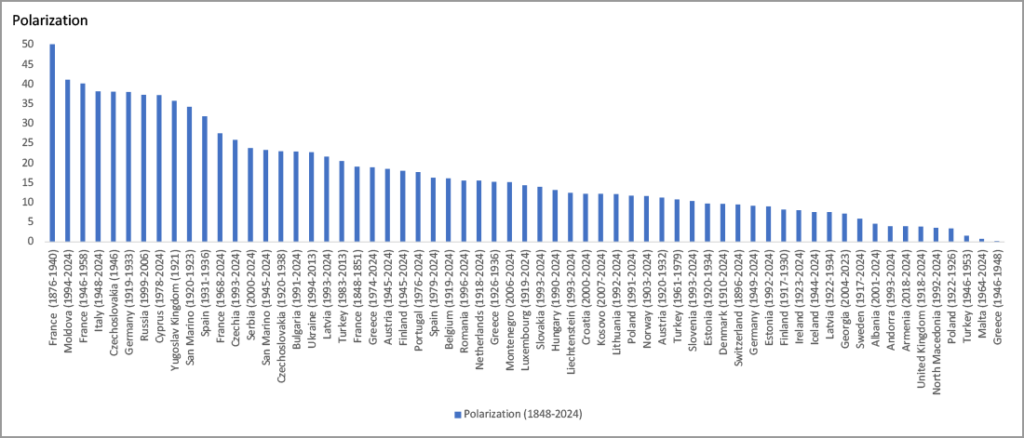Polarization
Bearing in mind that “the greater the overall ideological distance between the parties, the more the system is polarized, and vice-versa”, polarization is calculated by taking into consideration the percentage of votes obtained by “anti-political-establishment” parties. The latter are understood as those fulfilling “all of the following criteria: (1) it perceives itself as a challenger to the parties that make up the political establishment; (2) it asserts that a fundamental divide exists between the political establishment and the people (implying that all establishment parties, be they in government or in opposition, are essentially the same; and (3) it challenges the status quo in terms of major policy issues and political system issues” (see Sartori, 1976; Abedi, 2004: 12; Karvonen and Quenter, 2003: 142).
Please cite the following database as: Casal Bértoa, F. (): Database on WHO GOVERNS in Europe and beyond, PSGo. Available at: whogoverns.eu

